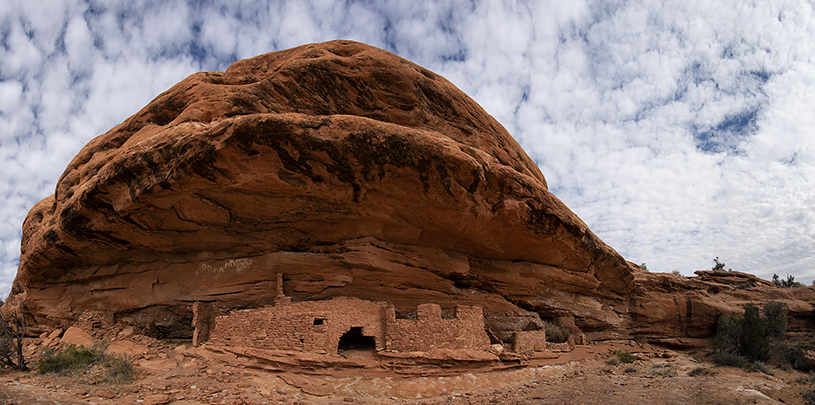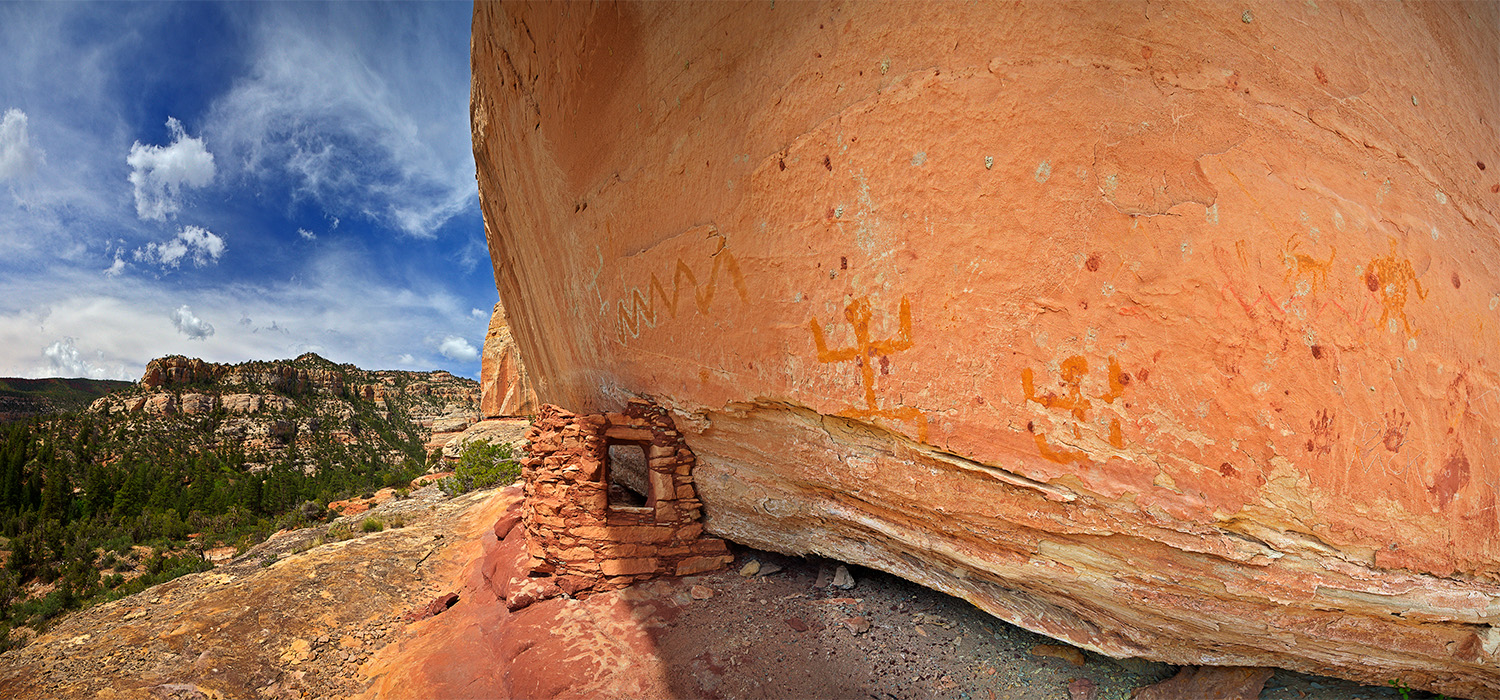
 by Tim Peterson, Cultural Landscapes Director
by Tim Peterson, Cultural Landscapes Director
Bears Ears is more than a line on a map or a dusty outdoor museum; it’s a vibrant and evolving cultural landscape. Stewarded by Indigenous peoples for hundreds of generations before the arrival of European settlers, Bears Ears is as arresting as it is unique.
Each of the places shown below lost national monument protections when President Trump unlawfully slashed Bears Ears National Monument by 85 percent in 2017, and each of them was protected anew by President Biden’s October 8, 2021 proclamation.
On signing his proclamation, President Biden said, “The truth is, national monuments and parks are part of our identity as a people. They are more than natural wonders, they're the birthright we pass from generation to generation. A birthright of every American. And preserving them is the fulfillment of a promise to our children and all those who will come to leave this world a little better than we found it.”
Enjoy a virtual view of these distinctive and extraordinary places, protected again, in Bears Ears National Monument.
 AMANDA PODMORE
AMANDA PODMORE
At the end of a sandstone peninsula high above a serpentine Cedar Mesa canyon, this defensive Ancestral Puebloan stronghold is one of Bears Ears’ most striking structures.
 TIM PETERSON
TIM PETERSON
Tucked in an alcove in one of the most remote regions of Bears Ears, the meaning of these petroglyphs is unknown to me. Their true meaning may be none of my business, but when I see them, I think of the cliff swallows and canyon wrens who still live nearby today.
 AMANDA PODMORE
AMANDA PODMORE
Rather than being made from stone, this Ancestral Puebloan granary in a canyon below Cedar Mesa is constructed from “jacal” or “wattle and daub,” a method of weaving sticks together, then coating them in mud. The same method of construction was used at about the same time as far away as the United Kingdom. The granary’s original door still rests nearby, hundreds of years later.
 TIM PETERSON
TIM PETERSON
Bears Ears is known for its outstanding diversity of ages and styles of petroglyphs. Rock art panels like this one near the San Juan River feature older images which oxidize and fade as time passes, and newer, lighter images on top. This is one of many sites in Bears Ears that honor polydactyl humans and animals, beings with “extra” fingers and toes.
 AMANDA PODMORE
AMANDA PODMORE
If you’ve ever hiked in slickrock country, you know how difficult it can be to travel up and down safely between steep rock layers. Indigenous people carved hand and toe holds to aid in passage here, and these are thought to have been enlarged by early sheepherders to move livestock to higher pastures.
 TIM PETERSON
TIM PETERSON
This Ancestral Puebloan structure was likely inhabited for a time, then added on to later, as evidenced by “newer looking” stones on a higher level. Many of these cliff dwellings were coated in exterior plaster and even paint at the time of their construction. In the alcove on the right side, pictographs of handprints can be seen, made by placing a hand on the rock, then blowing paint through a reed or hollow bone to create an outline of the hand.
 TIM PETERSON
TIM PETERSON
This striking panel also contains older and newer petroglyphs, featuring spirals made by Ancestral Puebloans, horses likely carved by Diné (Navajo) people, and an elk likely carved by Nuche (Ute) people. This panel, like the Bears Ears Inter-Tribal Coalition, features people from different cultures working together across time to create lasting beauty and meaning.
Interior Secretary Deb Haaland anchored the importance of these places in words in her remarks at the signing of the proclamation restoring the monument’s boundaries, saying, “Bears Ears is a living landscape. When I've been there, I've felt the warmth and joy of ancestors who have cared for this special place since time immemorial. It's a place where you can stand in the doorway of a home where a family who lived thousands of years ago left behind a legacy of love and taught conservation for a place that sustained them for countless generations. Stories of existence, celebration, survival, and reverence are etched into the sandstone canyon walls.”
These stories are evident all over Bears Ears, and thanks to renewed protections and a forthcoming tribally led monument management plan, perhaps we’ll soon be lucky enough to hear a few stories told by those who know them best.
Send a personal note of thanks to President Biden. Thank the president for restoring full protections to Bears Ears and Grand Staircase-Escalante national monuments.

Cultural landscapes are full of stories, artifacts, and resources to appreciate. Here's how ›
Utah voters strongly support national monuments in general, and Bears Ears and Grand Staircase-Escalante in particular, a new poll shows.
Read MoreA small victory in the legal case challenging Daneros uranium mine, near Bears Ears National Monument.
Read MoreBears Ears petroglyph panels and cultural sites protected by new proposed management plan.
Read More